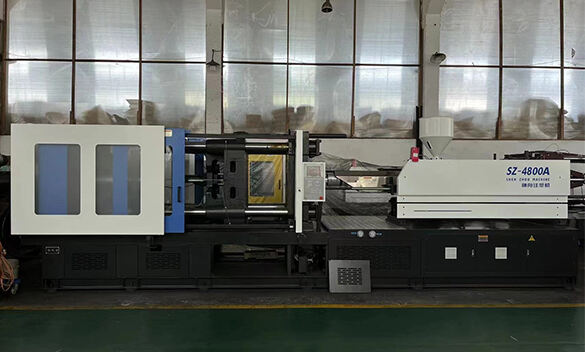In the bustling manufacturing world, the injection molding process is a marvel of modern engineering. This process has enabled the production of complex plastic parts with incredible precision and efficiency. A critical element in this process is the concept of back pressure. To fully utilize and optimize the performance of injection molding machines, grasping the intricacies of back pressure is essential.Back pressure in injection molding machines refers to the resistance applied to the molten plastic as it is mixed and pressed forward by the screw. This controlled resistance plays a vital role in ensuring consistent material density, enhancing the mixing of additives, and ultimately leading to superior product quality.Why is Back Pressure Important in Injection Molding?To begin with, back pressure is crucial for the homogeneity of the plastic material. When plastic pellets are heated and transformed into a viscous molten state, it is imperative to achieve a consistent and uniform mixture. Back pressure helps in mixing the molten plastic uniformly by providing resistance against the screw movement. This ensures the additives and colorants are evenly dispersed, leading to a consistent final product.Additionally, back pressure affects the plasticization of the material. Plasticization is the process of melting plastic and converting it into a homogeneous and flowable state. By applying the appropriate back pressure, the injection molding machine can better control the temperature and viscosity of the material, leading to enhanced plasticization. This results in better mechanical properties and surface finish of the molded products.Understanding the role of back pressure also involves considering its impact on the melting rate of the plastic. Higher back pressure increases the shear rate, which accelerates the melting process. This is crucial for achieving the desired cycle time in production, as an optimized melting rate can significantly improve the efficiency of the injection molding process.Another critical aspect is the influence of back pressure on volatiles and air entrapment. During the injection molding process, air and volatiles can get trapped in the molten plastic, leading to defects such as voids and poor surface quality. Proper management of back pressure helps in venting these trapped gases out of the material, ensuring that the final product is free from such defects.How to Optimize Back Pressure in Injection Molding?Optimizing back pressure is essential to achieve the best quality products and efficient production cycles. Here are some key strategies:Monitoring and Adjusting Settings:· Regularly monitor the back pressure settings on the injection molding machine.· Adjust the back pressure based on the material type, part design, and desired properties of the final product.· Use a balanced approach to avoid excessive or insufficient back pressure, as both can lead to defects in the finished part.Material Considerations:· Different plastics require different back pressure settings for optimal results. Understand the specific requirements of the material being used.· For high-viscosity materials, higher back pressure may be necessary to ensure proper mixing and flow.· Conversely, lower back pressure may be suitable for low-viscosity materials to prevent overheating and degradation.Cooling and Heating Control:· Efficiently control the heating and cooling phases of the injection molding cycle.· Ensure that the barrel temperature is managed effectively to complement the back pressure settings.· Avoid sudden temperature variations that could affect the homogeneity of the molten plastic.Screw Design and Speed:· The design and speed of the screw in the injection molding machine can influence the effectiveness of back pressure.· Use screws designed to facilitate proper mixing and melting of the material under the applied back pressure.· Optimize the screw speed to balance the shear rate and avoid material degradation.The Impact of Back Pressure on Product QualityAchieving consistent product quality is the ultimate goal in injection molding. Properly managed back pressure directly contributes to this by:Reducing Material Degradation:· Too high back pressure can cause excessive shear, leading to material degradation.· Ensuring appropriate back pressure minimizes the risk of thermal degradation and molecular breakdown of the plastic.Enhancing Surface Finish:· Uniform back pressure ensures that the molten plastic fills the mold cavities uniformly, enhancing surface finish and reducing blemishes.Minimizing Defects:· Proper venting of gases and avoiding air entrapment through optimal back pressure reduces defects like voids, bubbles, and sink marks.Ensuring Dimensional Stability:· Consistent back pressure ensures uniform cooling and solidification of the plastic, which is crucial for maintaining dimensional stability and precision in the finished parts.ConclusionIn the intricate world of injection molding, back pressure stands as a pivotal factor influencing the quality, consistency, and efficiency of the process. By understanding and optimizing back pressure settings, manufacturers can achieve superior product quality, reduce defects, and enhance overall production efficiency. It is a critical aspect that demands careful consideration and precise control to harness the full potential of injection molding technology.
FAQ
What is back pressure in injection molding?
Back pressure is the resistance applied to the molten plastic by the screw in an injection molding machine to ensure consistent material density and enhanced mixing of additives.
How does back pressure affect product quality?
Proper back pressure reduces material degradation, improves surface finish, minimizes defects, and ensures dimensional stability of the molded parts.
What are the methods to optimize back pressure in injection molding?
Key methods include monitoring and adjusting settings, considering material specifications, controlling heating and cooling phases, and optimizing screw design and speed.
Can high back pressure lead to defects in injection molding?
Yes, excessively high back pressure can cause material degradation, leading to defects such as voids, bubbles, and sink marks in the finished product.
Why is back pressure important for plasticization?
Back pressure helps control temperature and viscosity during plasticization, ensuring a homogeneous and flowable molten state, leading to superior mechanical properties and surface finish in the final product.



